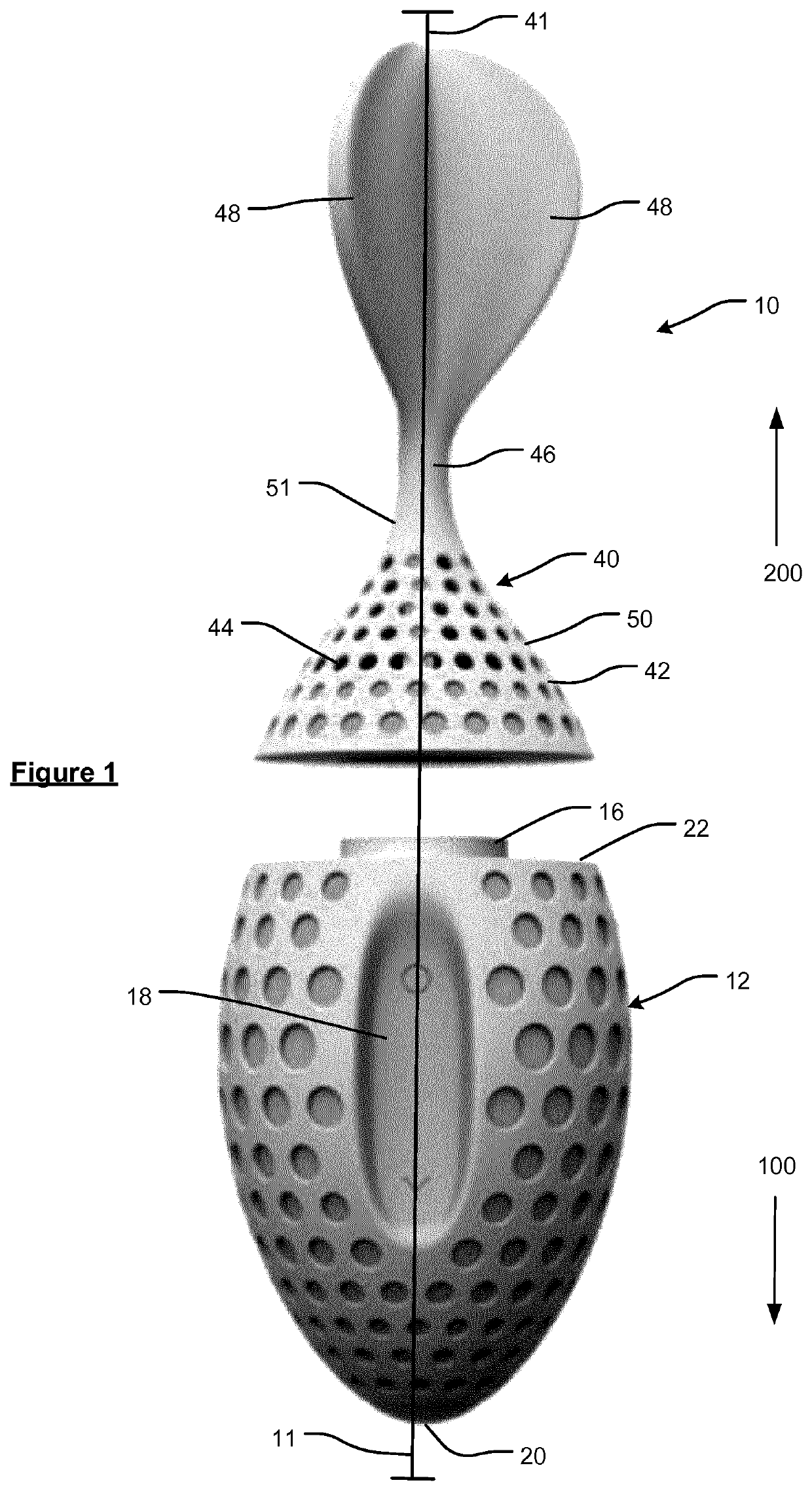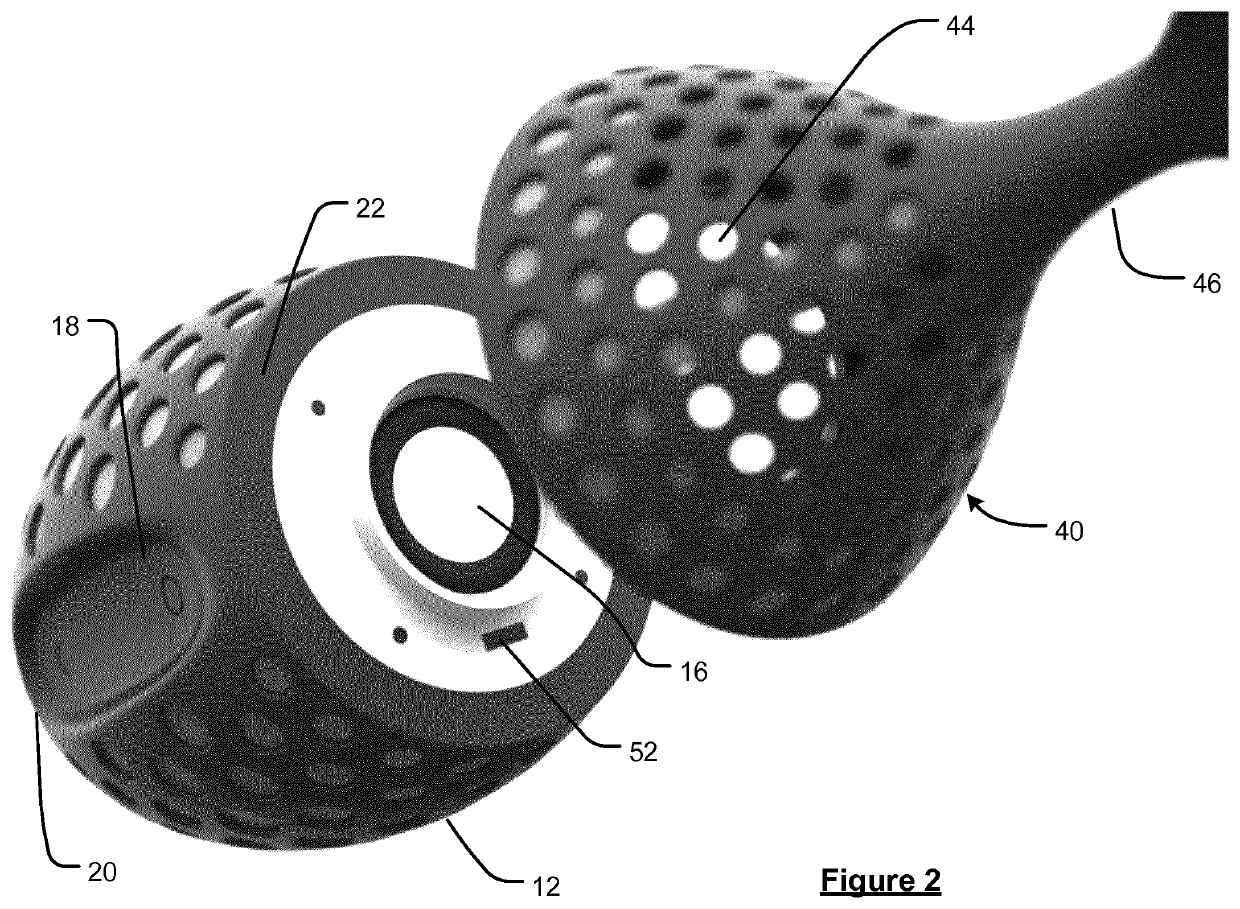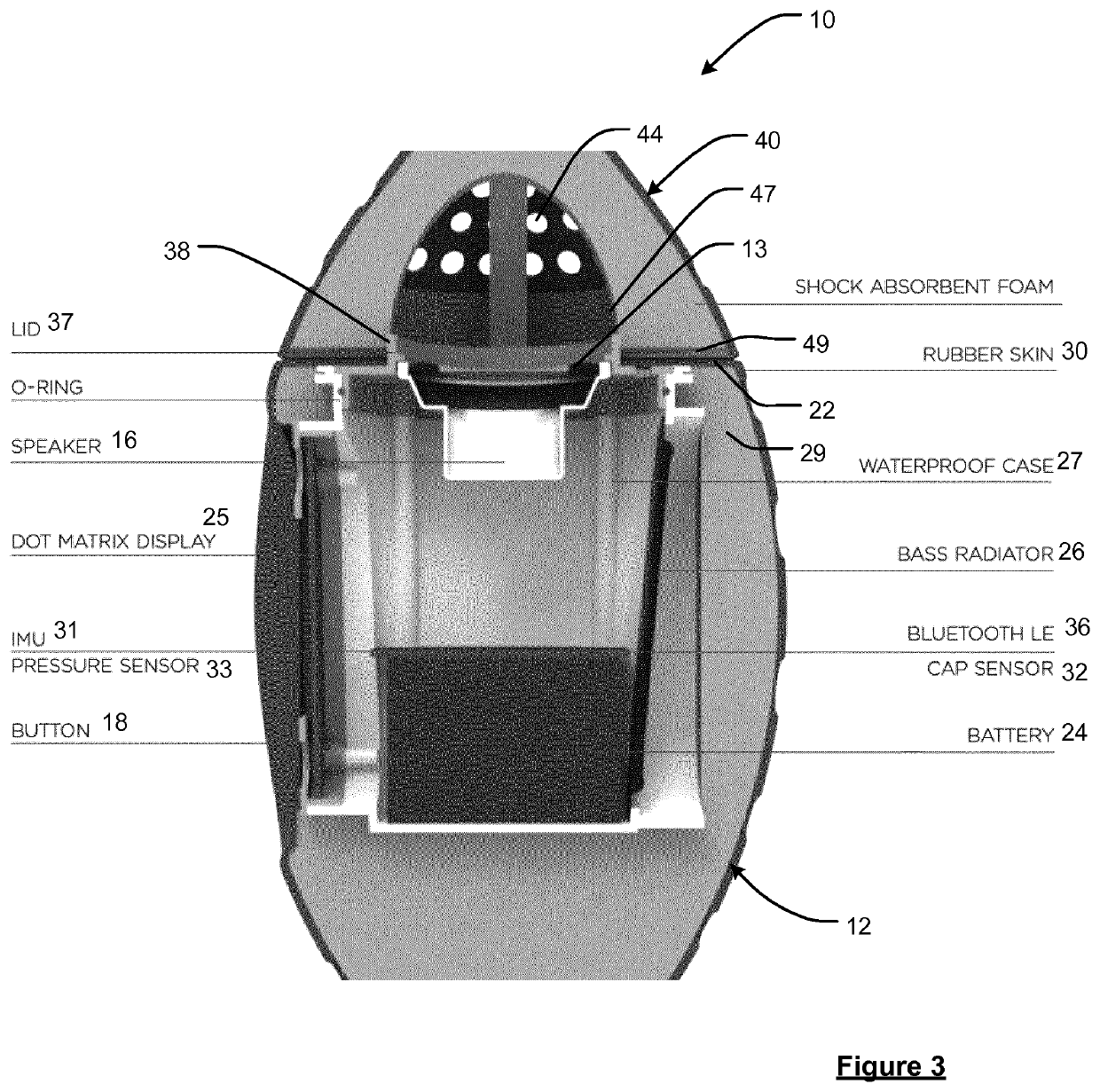Throwable Objects
a technology of throwing objects and objects, which is applied can solve the problems of polluting the true distance measurement data, the accelerometer is not able to distinguish between motions of balls in the hand, and the flight information of electronic balls is limited in the field of throwing objects, so as to improve the accuracy of height measurement, and improve the effect of determination or distinction
- Summary
- Abstract
- Description
- Claims
- Application Information
AI Technical Summary
Benefits of technology
Problems solved by technology
Method used
Image
Examples
Embodiment Construction
[0057]FIGS. 1 to 3 show a shuttle 10 which a user may pick up and throw. The shuttle 10 has a head 12 that is removably connected to a tail 40. The connection is such that the major axis 11 of the head 12 is collinear with the major axis of the tail 40.
[0058]The head 12 has a front end 20 and a back end 22. The front end 20 is shaped to provide the least amount of drag against the forward movement of the shuttle 10 when the front end 20 faces the forward direction 100. The back end 22 is substantially planer in a plane that is orthogonal to the major axis 11 of the head 12.
[0059]The head also comprises: a speaker 16, a speaker cavity 27, a bass radiator 26, an electronic circuit board 23, a battery 24, a power button 18 for turning the electronics on / off, a dot matrix display 25, a push-fit fastener 37, and a charging port for (re)charging the battery 24.
[0060]The push-fit fastener 37 defines a circular lip 38 surrounding a circular aperture 13 at the back end 22. The circular apert...
PUM
 Login to View More
Login to View More Abstract
Description
Claims
Application Information
 Login to View More
Login to View More - R&D
- Intellectual Property
- Life Sciences
- Materials
- Tech Scout
- Unparalleled Data Quality
- Higher Quality Content
- 60% Fewer Hallucinations
Browse by: Latest US Patents, China's latest patents, Technical Efficacy Thesaurus, Application Domain, Technology Topic, Popular Technical Reports.
© 2025 PatSnap. All rights reserved.Legal|Privacy policy|Modern Slavery Act Transparency Statement|Sitemap|About US| Contact US: help@patsnap.com



